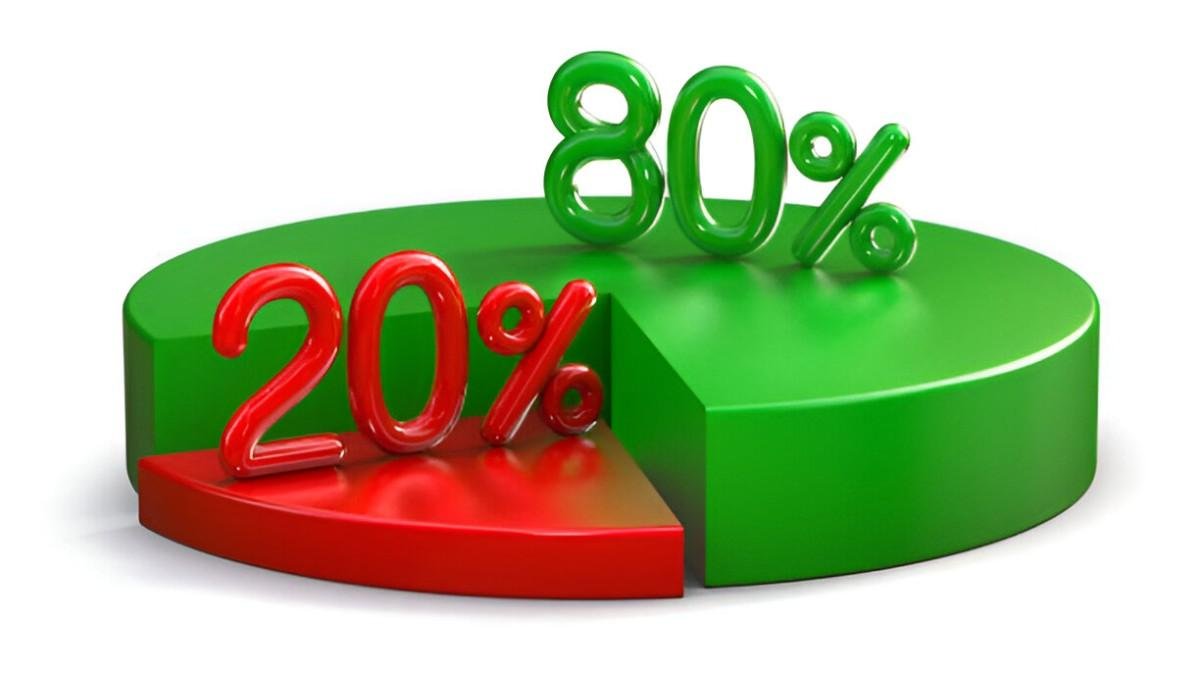For investors seeking a “just right” approach between aggressive growth and conservative protection, the 80/20 mutual fund allocation has emerged as a compelling solution. Having helped hundreds of clients implement this strategy, I’ve seen firsthand how this balanced approach can weather market storms while still capturing substantial upside.
Table of Contents
Understanding the 80/20 Portfolio
This allocation divides investments between:
- 80% equities (for growth)
- 20% fixed income (for stability)
Historical Performance (1990-2023)
| Portfolio | Avg. Annual Return | Worst Year | Best Year |
|---|---|---|---|
| 100% Stocks | 10.2% | -37.0% (2008) | +37.6% (1995) |
| 80/20 Portfolio | 9.4% | -28.1% (2008) | +32.4% (1995) |
| 60/40 Portfolio | 8.7% | -20.1% (2008) | +25.1% (1995) |
Data: Portfolio Visualizer (S&P 500 and Bloomberg Aggregate Bond Index)
Why 80/20 Works So Well
1. The Sweet Spot for Compound Growth
An 80/20 portfolio captured 92% of the S&P 500’s returns since 1970 with 40% less volatility.
2. Psychological Benefits
- Less panic during downturns (20% cushion)
- Fewer emotional decisions that hurt returns
3. Rebalancing Opportunities
The 20% bond allocation provides “dry powder” to buy stocks when markets decline.
Building Your 80/20 Portfolio
Equity Allocation (80%)
| Segment | % of Portfolio | Fund Examples |
|---|---|---|
| U.S. Total Market | 50% | VTSAX, FSKAX |
| International | 20% | VTIAX, FTIHX |
| Small-Cap Value | 10% | VSIAX, AVUV |
Fixed Income (20%)
| Type | % of Portfolio | Fund Examples |
|---|---|---|
| Intermediate Treasuries | 10% | VFIUX, FUAMX |
| TIPS | 5% | VAIPX, FIPDX |
| Short-Term Corporates | 5% | VCSH, FICSX |
Real-World Growth Example
Initial Investment: $100,000
Annual Contribution: $10,000
Projected Value After 20 Years: ~$850,000
(Assumes 7.5% annual return with annual rebalancing)
Who Should Use an 80/20 Allocation?
Ideal Candidates:
- Investors with 10+ year time horizons
- Those who want growth but can’t stomach 100% equities
- Accumulators in their 30s-50s
Poor Fits:
- Retirees needing income (better with 60/40)
- Ultra-conservative investors
- Those with <5 year time horizons
Rebalancing Your 80/20 Portfolio
Simple Rebalancing Rules:
- Annual Check: Review every 12 months
- 5% Threshold: Rebalance if any asset class drifts >5% from target
- New Money: Direct contributions to underweight assets
Example Rebalance:
After a bull market, your portfolio becomes 85/15. You would:
- Sell 5% of equities
- Buy bonds to restore 80/20
Common Mistakes to Avoid
- Performance Chasing
Don’t abandon bonds when stocks are soaring - Overcomplicating
More funds ≠ better diversification - Ignoring Taxes
Hold bonds in tax-advantaged accounts when possible - Neglecting to Rebalance
Letting allocations drift defeats the purpose
Alternatives to Consider
| Strategy | Equity % | Best For |
|---|---|---|
| 90/10 | 90% | Younger investors |
| 60/40 | 60% | Pre-retirees |
| All Weather | 30% | Inflation protection |
Final Recommendation
The 80/20 mutual fund strategy offers what I call the “Goldilocks allocation” – not too hot, not too cold. By maintaining this balance, you position yourself to:
- Participate in market gains
- Sleep better during downturns
- Systematically buy low and sell high through rebalancing
Implementation Steps:
- Choose low-cost index funds
- Set calendar reminders to rebalance
- Stay disciplined through market cycles
Remember: The 80/20 rule works because of its simplicity. The hardest part isn’t the strategy – it’s sticking with it when emotions run high.





